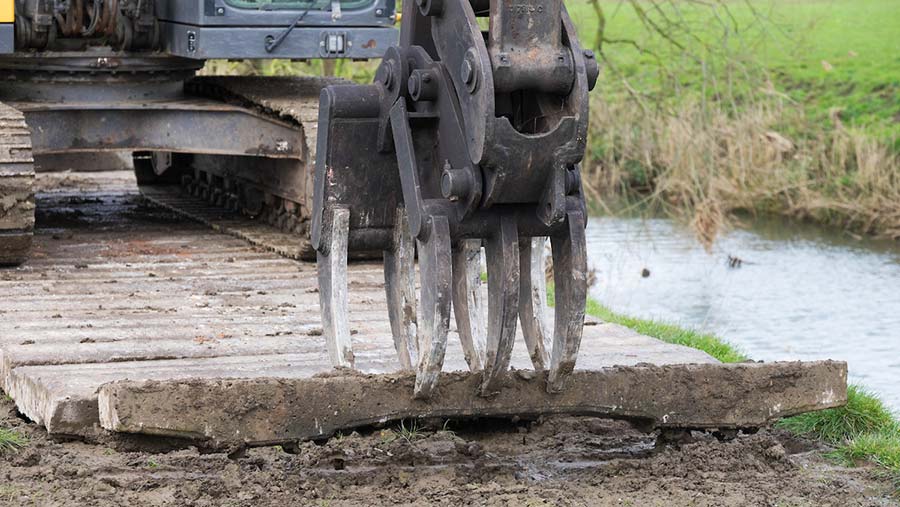5 tips on maintaining cow tracks
 Contractors laying concrete railway sleepers on a dairy farm for use as cow tracks © Tim Scrivener
Contractors laying concrete railway sleepers on a dairy farm for use as cow tracks © Tim Scrivener Over time, tracks can be worn away by surface water and use, making it inevitable that maintenance will be required.
Preserving the life and performance of a cow track can prevent foot injuries, as well as reducing run-off and degradation.
The amount of maintenance depends on the type of track, the number of cows, how much the track slopes and how much rainfall there is.
See also: A guide to buying and installing cow tracks
Below, we get advice from Charles Bentley at Adas on maintaining and cleaning cow tracks to ensure they remain in tip-top working order.
1. Maintain the track to avoid materials breaking down
The lifetime and maintenance of the track will vary with the material.
There are very few woodchip tracks now, but these break down within a few years, and if there is only soil underneath, the track will eventually disappear, so it will need topping up regularly.
Track figures
- 150mm crossfall on 4m wide or less
- 3-6% camber on wider tracks
- 12% maximum gradient with a loose surface, ideally no more than 8%
Source: AHDB
With Oolitic limestone tracks, the camber can be lost over time with ruts and water erosion, and the surface layer is lost.
Re-profiling may be a matter of removing or rolling the edges or building up the centre and topping up the surface layer.
Sleepers and concrete will last a long time but will need occasional attention.
2. Ensure good drainage
The drainage on a concrete track should be checked at least annually, but other materials such as limestone may need re-profiling every four to five years.
Try to prevent the build-up of water by having drains along the length of the track.
It is not good to have the water draining down to the end of the track – as this will cause erosion – it is far better to have it draining off the sides every 20-30 yards.
Having a camber that allows drainage to both sides of the track is useful.
This is something to consider if you are laying a new track.
Verges almost always build up at the side of tracks so watch out for these and remove them to allow free drainage.
3. Scrape off manure
Sleepers will need very little maintenance, but ongoing scraping of manure where it hasn’t washed off is advised – particularly at road crossings – as it can become slippery and impinge drainage.
Be careful to have the right angle if you are using a bucket brush to clean the track – a yard scraper can be used if necessary.
If manure has built up on astroturf, it can be scraped carefully with a bucket brush, but be careful not to remove all the sand that holds the astroturf in place.
If manure has filled in the gaps between the strips, you could replace them with new astroturf and re-profile the track.
4. Watch the cows to indicate how well tracks are working
Watch where the cows walk, this will indicate how good the surface is.
Are they avoiding a part of the track? Is this because it has become uncomfortable or slippery?
5. Avoid driving vehicles on tracks where possible
Farmers sometimes use quad bikes, scraper tractors and occasionally silage trailers on cow tracks, which will all cause damage where water can pool and erode the track surface.
It is best to avoid driving any vehicle on tracks designed for cows.
